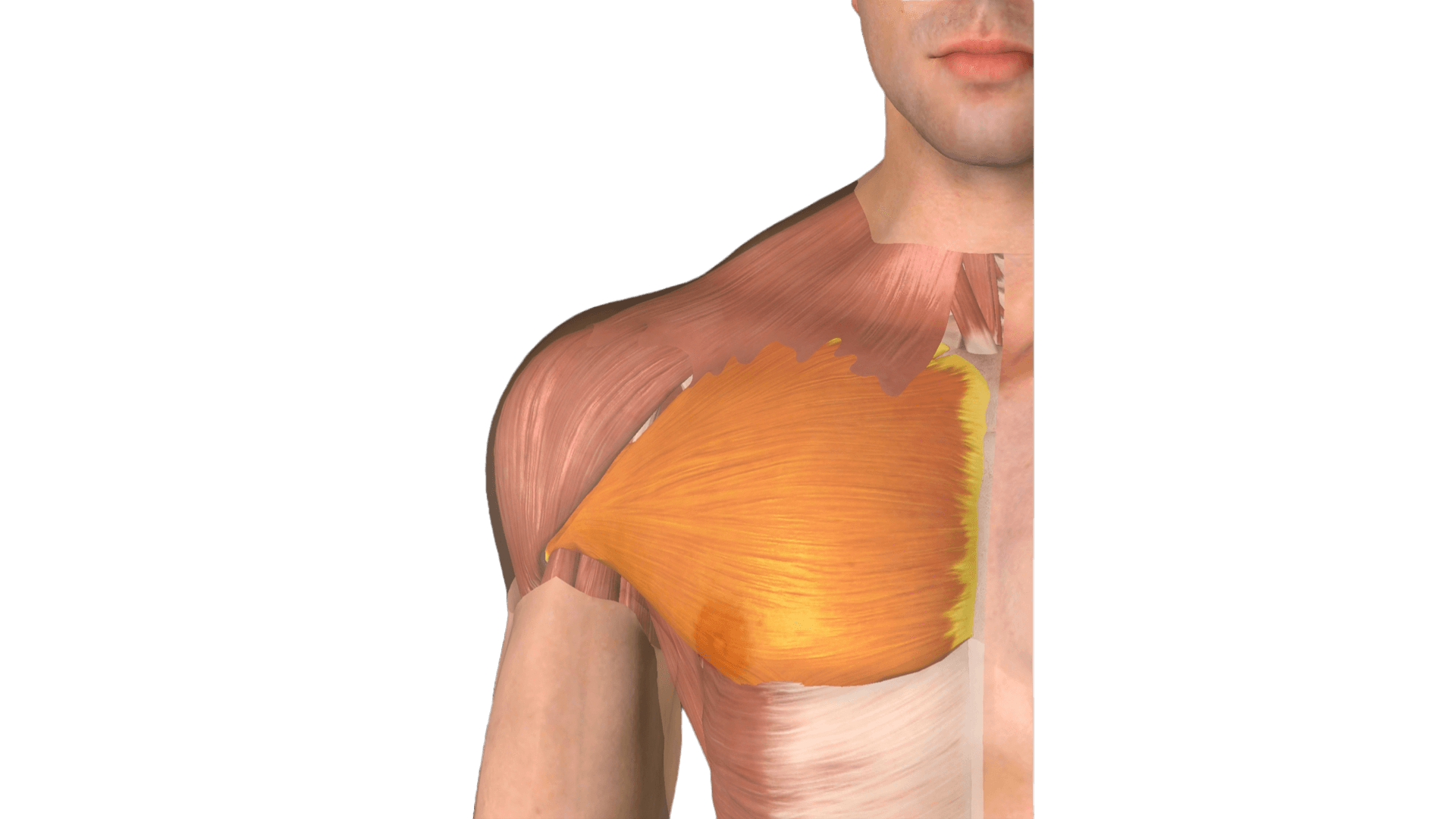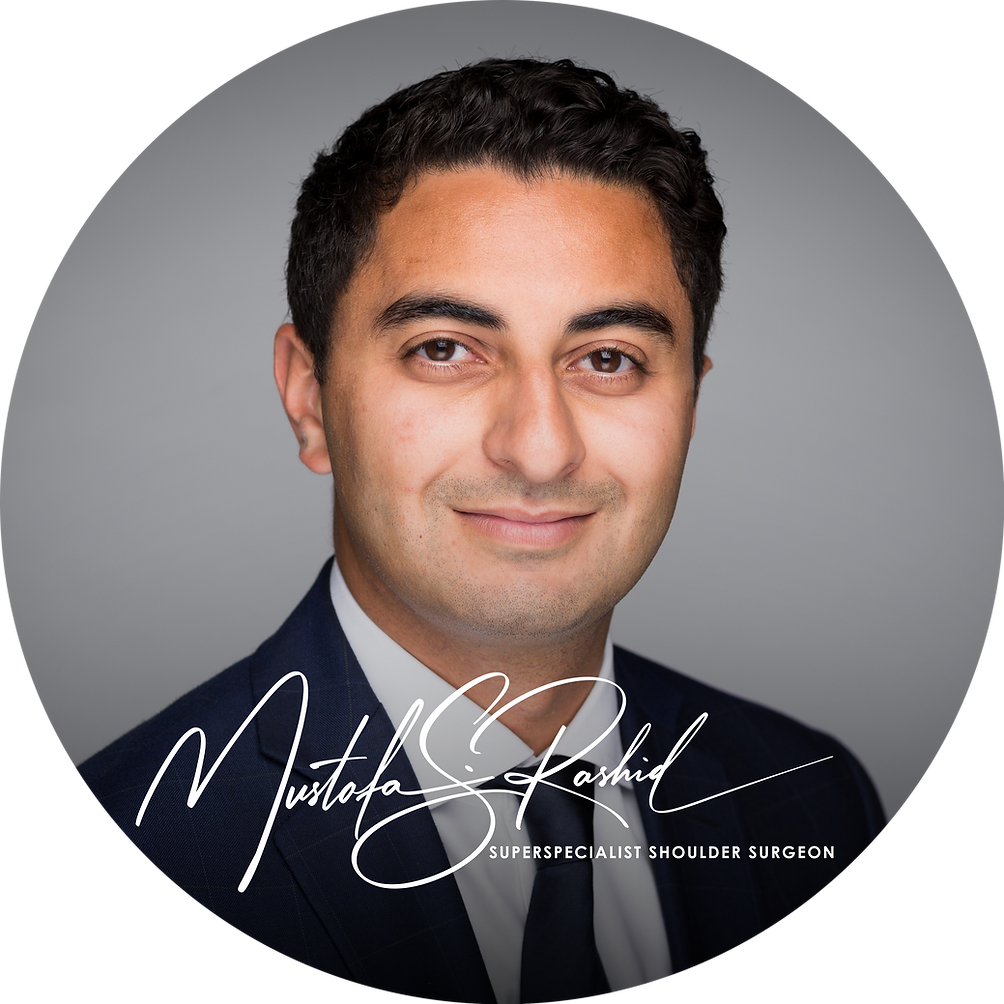Pec Major Tears

Anatomy and Function
The pec major muscle is a large muscle made up two “heads” that attach from the collarbone (clavicular head) and the breastbone (sternal head) to the arm (humerus). The tendon is narrow in one dimension but wide in the other dimension. The tendon attaches over a wide area on the arm.
The function of the pec major tendon is for pushing movements away and in front of the body. It also helps in bringing the arm back to the side from a position away from the body.
Types of pec major tears
Most pec major tears occur when the force of contraction of the muscle exceeds the tendons ability to carry that force. Tears can be either from detachment of the tendon from the humerus bone (most common), or from the tendon coming away from the muscle (musculotendinous tears). If the tear is identified early (in the first 6 weeks), it is called an acute, or fresh, tear. Anything longer, then it is a chronic tear. The sternal head may tear, whilst the clavicular head may remain intact, or both heads may detach from the bone.
Symptoms
It is common for patients to injure their pec major during weightlifting, in particular flat bench press, usually at the eccentric phase of contraction. Other injuries can occur during contact sports, such as rugby. A pop may be felt. The muscle will look different, and more swollen than the other side. Bruising may occur either in the chest, or down the arm. The nipple may sit at a lower level on that injured side. The armpit fold at the front also may look different. Patients with a pec major tear will often have pain and weakness in certain movements.
Diagnosis
Pec Major tears can often be diagnoses by a specialist, such as Dr. Rashid, without the need for any tests. Occasionally, a MRI scan may be needed to make to determine what type of tear has occurred or to confirm that the tendon is torn. In chronic (> 6 weeks from injury), a MRI may help determine the need for extra equipment to achieve a repair.
Do I need surgery to repair my pec major?
Some people may choose not to have a repair of their pec major tear. Most people can compensate and the pain usually subsides with time. You may notice weakness in certain activities, but this can range from being minor deficits to up to 50% reduction in peak torque. Surgery will often lead to better strength, better function, and better symmetry of the muscle. However, the risks are greater with surgery compared to not undergoing surgery.
Surgical Treatment Options
Dr. Rashid uses the most advanced techniques to repair the pec major tendon. For acute repairs, a combination of double or triple loaded all-suture anchors are placed in the bone. These anchors have very strong sutures that are passed into the tendon and the tendon securing down to the bone, after preparation of the bone bed to stimulate healing. For chronic tears or tears involving the musculotendinous junction, a skin graft from a donor may be used to reinforce or replace the missing tendon. The technique is more challenging and takes a longer time to recover.
Risks and outcomes of surgery
Like any operation, pec major surgery has risks. Although these are not common, they are significant. Dr. Rashid will explain these risks to you in detail if you choose to consider surgery. Surgery is performed under general anaesthetic. Infection is an uncommon but serious complication. You will be given antibiotics when under general anaesthesia to reduce this risk. Dr Rashid uses absorbable and antimicrobial coated sutures buried under the skin. Nerve injury is rare. Recurrent tears can occur, especially with uncontrolled loaded of the healing or maturing tendon repair, so it is important to follow your therapy guidance closely. Most patients are satisfied with the outcome of surgery. The average return of strength is approximately 90% of the opposite side.
Self-Management and Lifestyle Tips
This type of injury may be a good indicator that your weight training may be beyond what your tendon is capable of handling. Adaptions with our physiotherapy and strength coaches may allow you to continue building muscle whilst minimising risk of repeat injury. Often, utilising a Smith machine, more incline press exercises, and higher rep ranges (with lower weight) may allow you to return to lifting safely.
About the Author

Mustafa Rashid
Dr. Mustafa Rashid is an award-winning, well published superspecialised surgeon from the UK, specialising in shoulders
